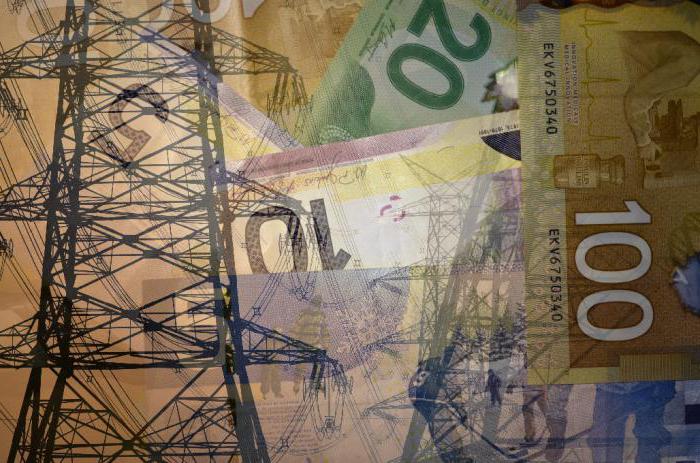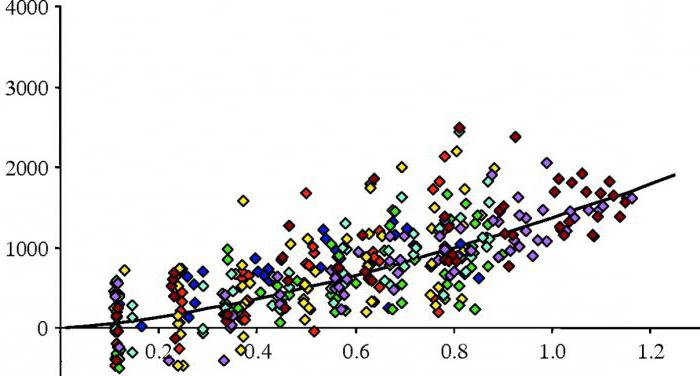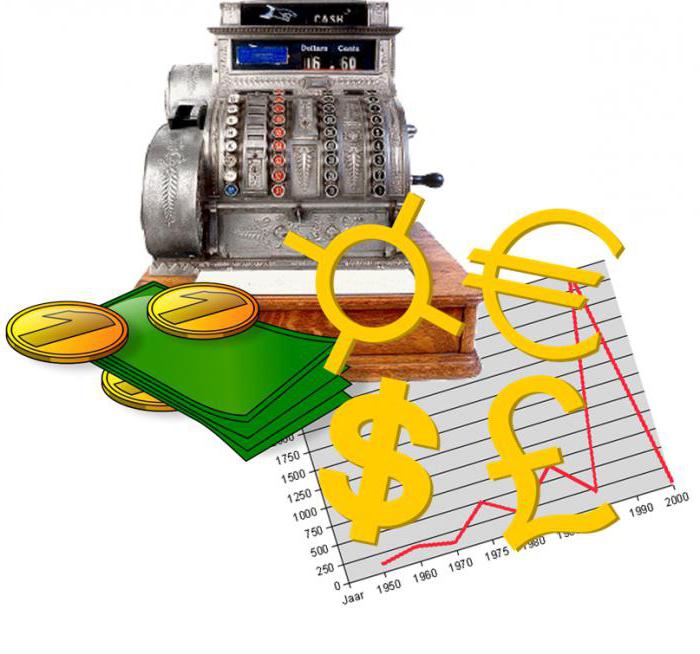Among other economic categories, a special position belongs to such a concept as "cost." The formation of this phenomenon, the amount it reaches, is directly related to the effectiveness of the company. The total total amount of costs incurred by the enterprise has a strong impact on the financial performance of any business entity. For entrepreneurs, managers, economists of different levels, it is important to know how to calculate the costs and cost of production in order to lead the organization to economic success.

General theory
Before considering what the structure of the cost price of a product is, it is necessary to understand the very concept of “cost price”. This phenomenon reflects how much the cost of creating a particular product or service was incurred. This indicator is generalized in nature, it includes spending on natural resources, labor, materials, contributions to various funds and other items of expenditure, including losses incurred by the company in connection with the production of a given product.
If some components do not have a monetary value, they are given a rough financial estimate. That is, this includes all material costs, labor costs, as well as payments associated with the need to operate equipment that wears out during production, money allocated to obtain a work permit, and so on.
The cost structure for cost elements involves the allocation of all current financial contributions. This includes all costs incurred by the company for the organization, implementation and completion of the production process. In fact, the cost and its calculation is the ability to reimburse the cost of resources spent as part of the production process. In order not to miss anything, economists use the breakdown of the cost structure by costing items. This makes it possible to display the most complete picture of expenses without data loss (which, in turn, could provoke financial losses).
Cost: use wisely
The cost price is intended to describe how actively each of the resources available to the company is used in the production process. At the same time, economists take into account the dynamics of both constant and variable capital. Costing always requires you to consider all significant factors in order to minimize the error. In addition, the management staff must know exactly what the actual cost of the product is composed of, this will help to draw up strategic plans and will provide an opportunity to understand which aspects should be improved, developed, improved, and which ones should be minimized.
From the point of view of the economy, the actual cost is a significant indicator on which specific functions are assigned. Among them are control, accounting of expenses related to the manufacture and sale of goods, as well as the formation of value for the wholesale sale of products. Correct costing allows you to create an accurate idea of what should be the profit from the transaction, so that production becomes profitable.
Cost functions: what to look for?
Calculation of the actual cost gives the basis for calculations, helps to understand what its value will be optimal in the current market conditions. In addition, it is through cost that one can justify, from an economic point of view, one or another managerial choice, make a decision in favor of introducing the latest technology or abandoning certain opportunities. All this is considered cost functions, through which through the analysis and calculations it is possible to ensure the prosperity of the enterprise.

We must not forget that the planned cost is the basis for calculating the financial productivity of the enterprise, it proves the feasibility of investment. It is about real investment. Focusing on the cost, you can decide in favor of the reconstruction of the production area or expansion of lines, you can justify the decision to replace equipment. Adjustment of the scale of the company, as well as the intricacies of the production process, is usually carried out with a preliminary analysis of the planned cost and real indicators accumulated over the years of activity of the enterprise.
Planning and control
The cost structure has a significant impact on how a given economic indicator is calculated, what it consists of and how much it affects plans to improve enterprise productivity. No entrepreneur will begin to invest their own or borrowed funds in the development of a business before calculating the approximate estimated value of the product, as well as its probable price set for the consumer. Cost structure is a term used to mean the ratio of different components that make up the final cost price. This includes many costly items due to the characteristics of the production process and technologies, sales methods.
To determine the cost structure, you must first compile a database, which would reflect all the costs associated with a particular product. Then the expenses are classified using the most modern economic theories. They distinguish both homogeneous elements from an economic point of view and specific items of expenditure. The data obtained in this way are used in a full-scale financial analysis.
Attention to all the details.
The cost structure based on the elements is usually pretty much dependent on the industry. For different areas of production, the differences can be very significant. Distinctive features of the structure reflect the specifics of a particular enterprise and depend on its costs. In any company, economists know exactly what the specific weight of various expenses within the company is, and the structure of the cost of production depends on this specific weight.
Some subspecies of industry can be combined into groups, since they are characterized by fairly similar patterns of the cost of production of goods. They are talking about industries:
- requiring large material investments;
- labor intensive;
- requiring energy expenditures;
- capital intensive.

The assignment of a particular enterprise to a particular industry usually allows you to create reserves, determine the sources by which you can reduce the cost of goods produced.
Question specifics
This is not to say that there is a single universal formula for calculating the cost of production. For each industry, it will have its own specific features. Economists must take into account that the division into the groups indicated above is rather conditional; a company can move from one group to another. This is due both to internal phenomena (improvement of production, its expansion), and external (technological progress, the introduction of new laws into force).
New technologies, modern technology allow you to change the proportion of labor, materials.Previously, almost all areas of industry were labor-intensive, but now many enterprises from this group have moved into the category of those in need of funds and materials. Accordingly, the formula for calculating the cost of production has changed. In modern, technologically advanced enterprises, the final result of the cost of a product is determined to a greater extent by spending on materials and equipment wear rather than on labor costs.
Structure: Persistence and Change
If you analyze the cost structure, based on the articles of the calculation, you can notice how much the specific gravity characteristic of a particular article affects the calculation of the final result. Changes in the structure are usually caused by the adjustment of internal and external factors provoked by the specifics of the work process, changing under the influence of technology, wear and tear of equipment, and the level of skill of employees. The working conditions of a particular enterprise and the industry to which it belongs, in general, have a strong influence on the articles for calculating the cost of production.
Fluctuations in the cost of fuel, equipment, and wages are quite significant for the cost of a product. Of course, the change in the exchange rate also affects. In addition, different enterprises are located in different ways with respect to sources of raw materials and fuel. The closer they are to such points, the more profitable and easier it is to deliver, respectively, the lower the cost item associated with logistics and supplies. Consequently, the economically advantageous (or disadvantageous) position of the enterprise also affects the structure of the final price of the product.
Cost: is it subject to change?
Cost structure may change over time. The adjustments are usually the following: the percentage of direct costs is reduced, that is, the materials spent on production lines, as well as the remuneration of employees require less financial investment.

At the same time, there may be an increase in the level of funds spent on selling the product and managing the company. This dictates the strategy of refusing to allocate indirect costs, when the funds spent on direct costs are taken as the basis of cost. Instead, in recent years, more and more enterprises are introducing a system of functional calculation of the cost of a product. It is believed that in most cases this provides economic productivity and financial benefit to the enterprise, although this rule has exceptions (some specific areas).
Cost indicators
It is customary to highlight the following indicators:
- level;
- relative;
- absolute.
Absolute indicators of cost
This group includes values that show how generally the level of costs for the manufacture and sale of goods is large. To calculate indicators, it is necessary to collect data from production documentation. Separately allocate the cost:
- manufactured goods;
- shipped from the warehouse;
- sold.
Level indicators
To this group it is customary to classify expenses:
- per piece of goods;
- for each monetary unit of goods sold;
- for each monetary unit of manufactured goods.
Relative indicators
This type of indicators is used to assess the dynamics of changes in cost after a certain time period. When calculating the cost of one unit of manufactured goods, over time you will notice that there has been a decrease or increase in this indicator, the difference in past and present costs is reflected in percent.
Usually a certain base period is chosen, and relative to it, the difference in cost price with the reporting time period is looked at. The ratio of values is multiplied by 100%, obtaining a percentage expression of the difference in financial parameters.
Costs: general information
Speaking about the cost structure, it is necessary to pay attention to what costs accompany the production process. These are divided into internal and external.
External costs - this is the money sent to suppliers as payment for the delivered goods. Internal ones are those that the company has incurred with its own resources. This is customary to include OS depreciation, recovery, salaries to the owners of the company.

There are also so-called common costs, which in fact are the sum of external and internal. This value is calculated to have an idea of the resources involved in the production process. Knowing the total costs, an entrepreneur can estimate how much money is needed to keep the company afloat. The cost structure is quite complex, depending on the nature and conditions of the production process. It is an integral element of the cost structure.
Costs: fixed, variable
Constant - these are the costs that do not change over time. They are not affected by the volume of goods produced. Changing the magnitude of such costs is not a simple process, requiring a point influence, and takes a lot of time. From fixed costs depends how large the company can be, what its production capacities will be. Fixed costs are expenses for new equipment, maintenance in good condition of the previously purchased, as well as costs associated with the creation and maintenance of adequate structures, buildings, machines.
Variable costs are determined by how large production volumes are. The larger the volume, the higher the cost, and vice versa. In this category, it is customary to include expenses caused by:
- purchase of raw materials;
- remuneration of employees;
- transport;
- energy spending.
Speaking of the total costs when taking into account the classification of variables, constants, we mean the total value of both at once. These indicators are necessary in order to conduct an accurate economic analysis for making management decisions. Additional important information is data on unit, average and marginal costs.
What is this about?
Average, specific - these are the categories of costs that are calculated per unit of manufactured goods. Typically, economists calculate the average cost: general, variable, constant.
Marginal - such costs that the company incurs, producing an additional unit of goods.

Variable, constant, unit, marginal costs form a technological set in total. It depends both on the level of technological development of a particular organization, and on the features of managerial decisions that control the work of the company. In addition, the influence is exerted by the market level of the value of resources, production factors. Costs also include costs, they fall under indirect or direct costs.
Cost and cost: direct link
When talking about direct costs, then consider those financial investments that are due to the volume of goods produced. In addition, direct costs depend on how much time is spent on manufacturing products. All these costs can safely be included in the cost. Typically, these are the categories:
- raw materials;
- marriage;
- materials.

Direct costs are largely determined by the characteristics of the production process. For accounting, it is customary to break spending into three groups:
- materials;
- work;
- overhead.
The former reflects how much material was spent on product release, including fuel. The second group reflects the salary paid to employees for the work they actually performed by processing the product. The third category - indicators that directly depend on the volume of manufactured goods and the time spent on it. This includes, for example, consumed electricity.